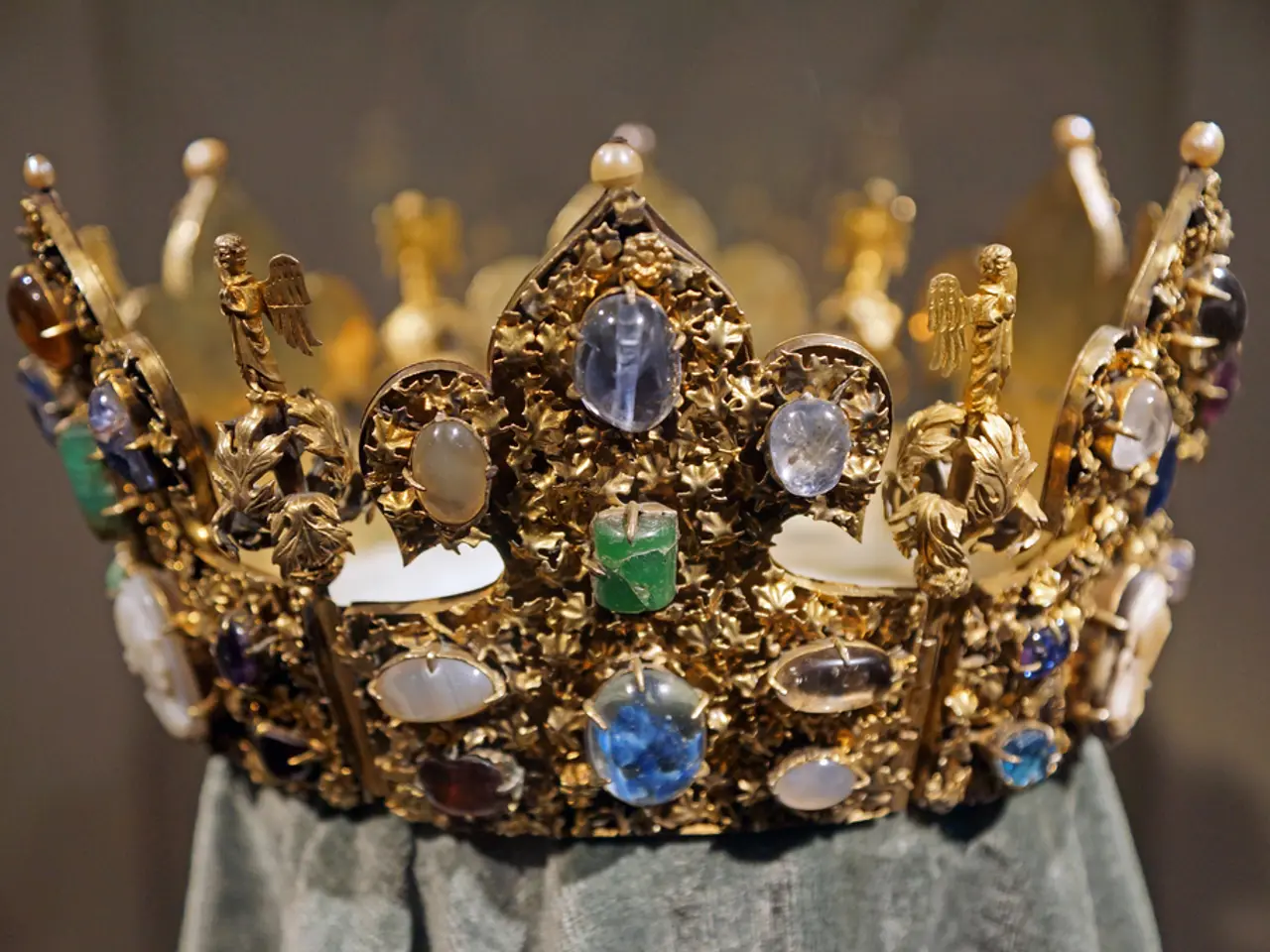Labradorite's worth, cost, and facts about jewelry
Labradorite, a captivating gemstone known for its striking play of colours, has a rich history and intriguing composition. Named after its discovery in Labrador, Canada, this mineral has since been found in various parts of the world, each offering unique variations in colour and optical properties.
The common inclusions in labradorite, such as hematite, zircon, magnetite, ilmenite, rutile, and microscopic particles of copper and lead, significantly influence the gemstone's appearance and optical properties. These inclusions are responsible for the gemstone's famed optical phenomena, including labradorescence and aventurescence.
Labradorescence, a characteristic iridescence seen in labradorite, results from the interference of light within the mineral layers, creating a play of colours like blue, green, gold, and even purple. This effect is best appreciated when the stone is viewed from different angles, due to light reflecting off microscopic included mineral layers.
Hematite inclusions, in particular, can create an aventurescence or sparkly effect, similar to that seen in the variety known as Oregon Sunstone. This sparkle produces a rolling sheen of golden-red spangles, contributing to the metallic schiller or aventurescence of the Oregon Sunstone.
Microscopic particles of metallic copper and lead are responsible for some of the unusual body colors found in Oregon labradorite, ranging from yellow and colorless to various other hues. These inclusions also contribute to the notable pleochroism, or color change with viewing angle, observed in Oregon labradorite.
Inclusions like zircon, magnetite, ilmenite, and rutile tablets further contribute to the complex interplay of light and colour seen in labradorite, enhancing its characteristic iridescence.
While labradorite from Oregon may show notable pleochroism, this phenomenon is usually absent in feldspars, making labradorite a unique exception. Gems larger than 20 carats are considered exceptional, while Oregon material is abundantly available in the 2-10 carat range.
Labradorite's colour ranges from colourless to yellow, with inclusions of minerals like hematite and copper creating a variety of other body colours, best known from Oregon localities. Translucent to opaque labradorite that shows blue, green, and golden Schiller colours is widely cut by hobbyists, making it a frequently encountered feldspar used as a faceted gemstone.
Faceted labradorite makes an unusual but handsome jewelry stone, as hard as moonstone or other feldspars worn in jewelry, but with a cleavage that should be minded. Labradorite with Schiller is a component of many dark-coloured igneous rocks used in building and construction as facing materials.
The Smithsonian Institution in Washington, D.C has several large labradorite gems, including a 11.1 carat yellow gem from Utah. Madagascar is a source for zircon, magnetite, ilmenite, and rutile tablets, contributing to the diverse world of labradorite.
In summary, the common inclusions in labradorite—hematite, copper, zircon, magnetite, ilmenite, and rutile—play a crucial role in producing its famed optical phenomena like labradorescence and aventurescence. They affect the gemstone’s body colour, iridescence, sparkle, and sometimes pleochroism, enhancing its visual appeal and uniqueness.
Labradorite, with its unique body colors and optical properties, is often used in fashion-and-beauty and jewelry, showcasing the gemstone's dazzling Schiller colors and intriguing iridescence. Meanwhile, labradorite inclusions such as zircon, magnetite, ilmenite, and rutile are valued resources in the home-and-garden sector, contributing to the diverse world of labradorite, with Madagascar being a significant source.




